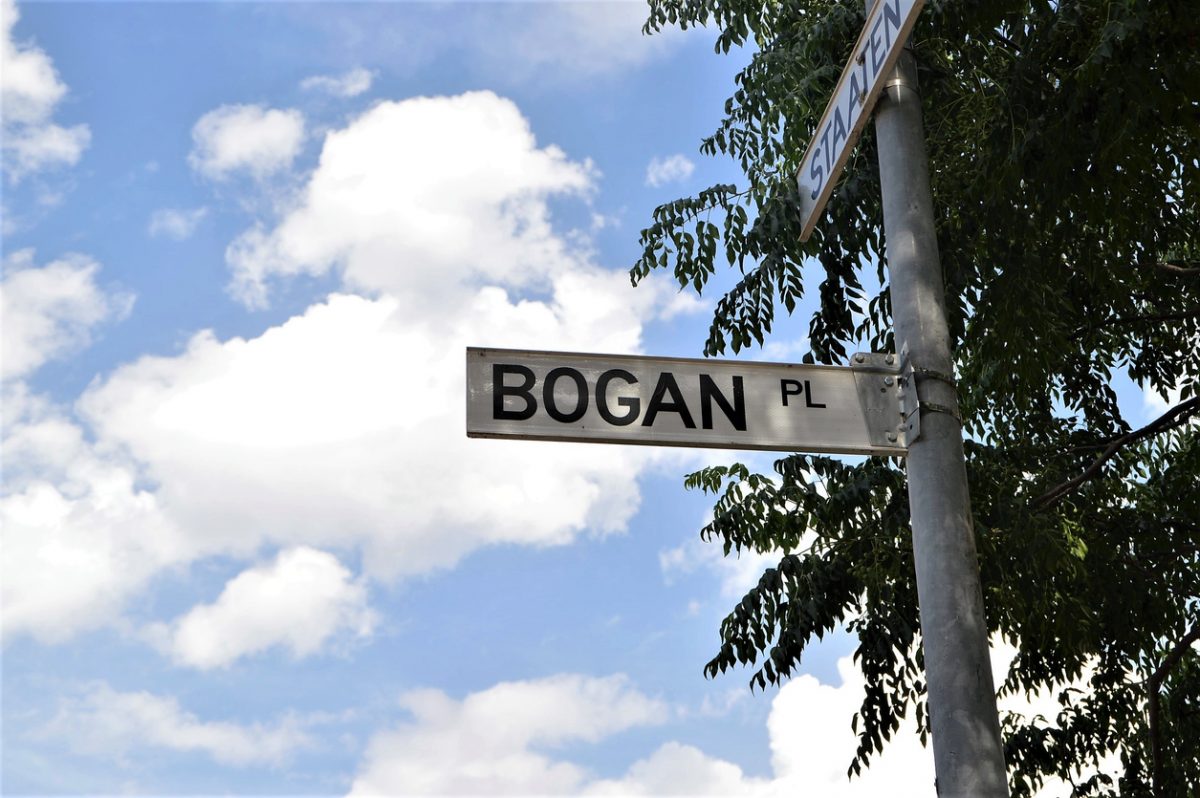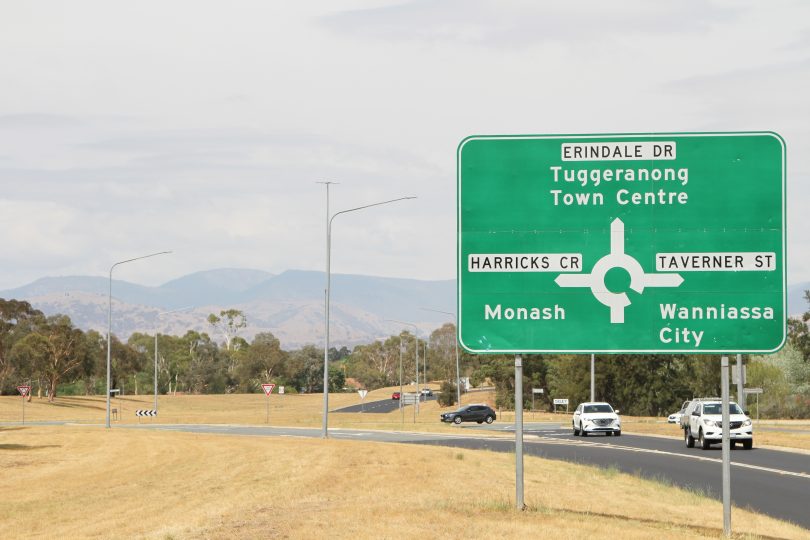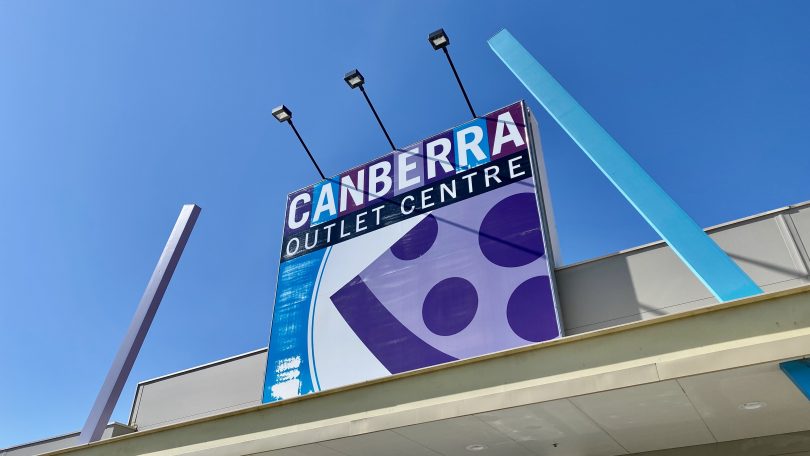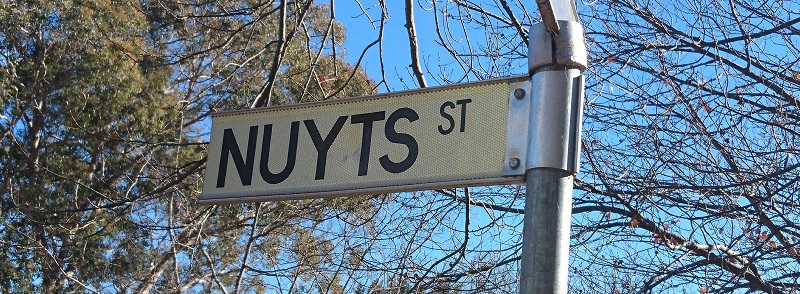
Yes, this exists. Photo: GJQuinlan.
Bogan Place, Batman Street, Blackbutt Street, Cockburn Street, Disney Court, Leakey Street, Mimosa Close, Purves Place, Sanger Street – all legitimate street names in Canberra, presumably gazetted with a straight face.
And we have to mention Iron Knob Street in Fyshwick – home to the ‘Canberra Outlet Centre’ of all things (I’ll let you work out the acronym).
If you’ve ever wondered who comes up with these, it might be your turn.
The ACT Government is asking for expressions of interest from Canberrans to join the ‘ACT Place Names Advisory Committee’.
ACT Surveyor-General Greg Ledwidge says this committee “helps shape our city by commemorating Australians and Indigenous culture through the naming of suburbs and public places, including roads, parks and geographical features”.
The committee generally consists of up to 12 members appointed by the Minister for Planning for a three-year term.
“We meet around three times a year,” Greg says.
“But there are a number of particular issues that may crop up that we manage out of those sessions.”

Engineers are the theme of street names in Monash. Photo: Region.
Every time there’s a new suburb with new streets, it falls to this committee to advise the minister on possible names. Many are garnered from suggestions from the community, too.
“Unfortunately, we don’t always use the suggested name because it may not meet some standards that we have for addressing,” Greg says.
They’re bound by a couple of rules under the Public Place Names Act 1989 and the Public Place Names Guidelines.
“Firstly, there are some that are named after flora and fauna or nonperson names, but when we’re dealing with people, the person has to have been dead for at least 12 months,” Greg says.
“And we don’t want names that sound too similar because the last thing you want in an emergency situation – if someone’s giving a street name and they get it slightly wrong – is an ambulance going to the wrong location.”
And yes, certain areas have themes.
For instance, Moncrieff highlights Australian musicians; Kaleen, Australian rivers; and Fyshwick, what were previously industrial towns. Iron Knob, in Fyshwick, for example, is a town in South Australia known for its large deposits of iron ore.

The Canberra Outlet Centre, located on Iron Kn… (snorty laugh). Photo: Region.
“We do change the themes slightly from time to time, so last year, we got approval to modify the theme of Fyshwick to also include Aboriginal Torres Strait Islanders land names,” Greg adds.
While we’re at it, Bogan Place in Kaleen is inspired by the Bogan River in central-western NSW and isn’t an indication any of the neighbours have cars on blocked or unkempt lawns. Likewise, Sanger Street in Franklin commemorates author and haematologist Dr Ruth Sanger, not Bunnings sausages.
Greg’s all-time favourite street name?
“Every time I get asked this question, the one street name that comes to mind is always Bon Scott Crescent in Moncrieff, after the AC/DC lead singer. And I wouldn’t say I was a fan, but I really always enjoyed Crackajack Way for the simple fact that when it was floated, it created such a lot of comment.”
Such a good name, he says, does impact property prices too.
“I know a number of people who really wanted to buy a property on Bon Scott Crescent for two reasons – the name, but also some street names just seem to roll off the tongue.”
Conversely, street and suburb signs are also stolen “from time to time”.
“When I was at university, one of my friends who won’t be named, did steal a sign because it had the same surname as himself,” Greg says.

Nuyts Street in Red Hill is named after Dutch explorer Pieter Nuyts, who sighted the coastline of the Great Australian Bight in 1627. Photo: File.
Applications for the committee roles close Thursday, 29 February 2024, and they’re looking for people who are “passionate about the ACT and committed to making good decisions”.
“After all, ACT place names are going to be around for a very long time.”
The committee strives for diversity, too, not only of linguistic and cultural backgrounds but also age.
“This is where we have struggled in the past to get someone in what we might describe as a young person,” Greg says.
“We need someone maybe in their twenties to really be able to give a different perspective and different thinking in the discussions.”
Visit the JobsACT website or the Diversity Register to apply. The committee will be appointed 1 July 2024 to serve through to 30 June 2027.
To look up what your street or suburb is named after, visit the ACTMapi website (FYI: if you live on Batman Street, you will be disappointed).












